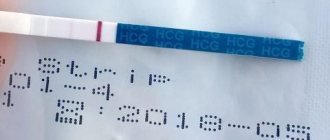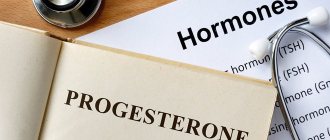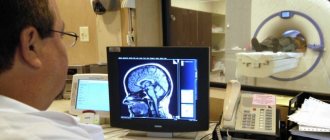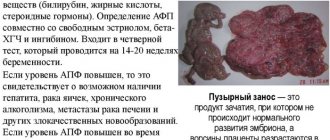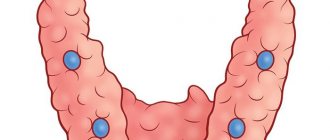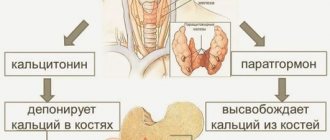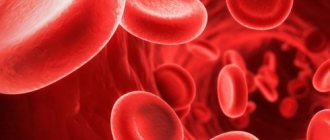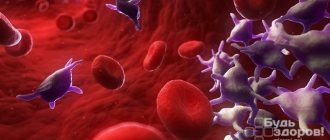17 - OH - progesterone (17 oxyprogesterone or 17 - opk) takes part in the functioning of the reproductive system. Thanks to it, the body is able to conceive and bear a child. It is found in small quantities in the blood. In women, the norm of 17 - OH - progesterone is closely related to the phases of the menstrual cycle.
In the first phase of the cycle, the substance is produced by the ovaries. Its concentration begins to increase in the middle of the cycle and remains unchanged during the second phase.
During fertilization, the level of 17 opc gradually increases. In the absence of conception, the concentration of 17 opc decreases until a new cycle begins.
The article will answer what 17 op hormone is, when it is necessary to take tests for its concentration, and what standards exist.
Differences between 17-OH-progesterone and regular progesterone
The substances have a similar name, but their functions and effects on the body are different. Progesterone is a complete chemical that controls fertility. It is produced by the temporary gland of the appendages (corpus luteum), the endocrine glands and serves as a regulator of estrogen, regulating the endocrine background. The male body produces small amounts through the testicles, adrenal glands, and processes it into testosterone and cortisol.
The hormone 17-OH-progesterone is an independent chemical compound that serves as an intermediate in the synthesis of complex substances. Produced by the reticular zone of the gland cortex, reproductive organs, placental tissues of the gestation period, through complex metabolic changes. Enzymes break down the substance into cortisol and androstenedione.
What is progesterone?
Steroid hormones are divided into several categories:
- Progestins - their main representative is progesterone;
- Mineralcorticoids - this group includes aldosterone and deoxycorticosterone, which affect the water-salt balance;
- Glucocorticoids - these include cortisol, which is involved in the regulation of immune and inflammatory processes, metabolism, heart and vascular function;
- Androgens and estrogens - these include androstenedione, testosterone, which are responsible for the functioning of the reproductive organs and other systems.
Progesterone is the basis for other hormonal elements. It is produced from cholesterol. In the body of men, it is predominantly synthesized by Leydig cells present in the testes. The adrenal cortex is responsible for the production of the substance. A smaller volume of the element is produced by fatty deposits and nerve cells of the brain.
Cholesterol synthesis occurs from fats found in foods. The substance can also enter the body through food, mainly of animal origin.
The functions of hormonal elements and their levels in the body are closely related to the nervous system. In addition, they actively interact with each other. Hormones of the hypothalamic-pituitary system are responsible for the synthesis and entry into the blood of such substances.
Functions and mechanism of action of the hormone 17-OH-progesterone
The epididymis in the follicular phase (the stage of follicle maturation) synthesizes 17-OH-progesterone. Ovulation is accompanied by a peak concentration that persists throughout the luteinizing phase (the stage of formation of the corpus luteum). The completed conception stimulates the growth of the hormone 17-OH-progesterone, which reduces the new cycle (rejection of the endometrium with menstruation) to a minimum.
What is 17-OH-progesterone
Content increases significantly during pregnancy and directly affects conception. Estradiol, which determines the structure and quality of endometrial receptivity, is produced from 17-OH-progesterone. Fluctuations in estradiol cause problems with embryo implantation - a factor in female endocrine infertility.
Acting as an important regulator of the reproductive system, the hormone 17-OH-progesterone must be within the average reference values - deficiency/excess negatively affects fertility, well-being, and health.
Description
First you need to understand what substance 17 hydroxyprogesterone is. What is this anyway? This hormone is sometimes called “intermediate”. It plays an important role in the formation of various substances in the body. For example, progesterone. It is an intermediate steroid. Produced by the adrenal cortex.
In addition to progesterone, it promotes the formation of estrogen and androgen. Available in both men and women. But for girls 17, oxyprogesterone plays a more important role. Important for conception and pregnancy in general. Therefore, it is important to be able to determine the amount of this substance in the human body. For normal conception, both men and women must have sufficient amounts of oxyprogesterone.
When are blood tests for 17-OH-progesterone prescribed?
A blood test for 17-OH-progesterone is prescribed when indirect signs of imbalance appear, to determine the effectiveness of steroid therapy. The following symptoms may seem suspicious:
- infertility of unknown origin, accompanied by excessive body hair;
- unstable emotional state, stress, nervousness;
- irregular menstrual cycle;
- suspicion of neoplasms of glandular tissue;
- suspicion of excessive growth of adrenal cortex tissue.
When deciding when to take a test for 17-OH-progesterone, it is necessary to take into account the dependence on the phases of the cycle and susceptibility to daily fluctuations. The maximum values are detected in the morning, the minimum at night.
Medical practice shows low diagnostic information during gestation.
How and when to take a blood test for 17-OH-progesterone
The attending physician must determine exactly which day of the cycle to donate blood for 17-OH-progesterone. It is necessary to focus on the gender, age, and condition of the patient. For women of reproductive age, the study is prescribed on the third day of menstruation, during the phase of follicular growth. For other patients, the study is carried out on any day.
A blood test for 17-OH-progesterone is taken strictly in the morning and on an empty stomach: the biochemical composition changes after eating, distorting the results. Non-carbonated clean water is allowed. It is extremely important to carry out diagnosis after quality sleep, against the background of a stable emotional state - the precursor of cortisol is sensitive to stress. Failure to comply with requirements distorts the final results.
Preparing for tests
Two days before collecting biological material at OPG17, you should stop:
- consumption of alcoholic beverages;
- smoke;
- take anticoagulants;
- physical exercise;
- stressful situations.
Before visiting a hospital facility, the patient should skip breakfast (the last meal no later than 8 hours before the blood draw). Doctors allow you to drink, but only clean water and in limited quantities.
The patient must tell the laboratory technician what medications he is taking.
Normal levels of the hormone 17-OH-progesterone in the body
The hormone 17-OH-progesterone is normally found in all people, but reference values depend on the gender and age of the patient. The table shows the content of 17-OH-progesterone in the blood of various population groups in nmol/l. There is also a reference norm for 17-OH-progesterone in ng/ml. Conversion of values: ng/ml*3.03 = result in nmol/l.
| Boys, girls | |
| 0 – 4 weeks | 50,4 |
| 4 – 8 weeks | 5,7 — 29,4 |
| 8–12 weeks | 0,3 — 12,0 |
| 12 weeks – 1 year | < 5,0 |
| 1 - 3 years | < 3,0 |
| 3 - 10 g. | < 0,21 — 5,15 |
| Boys, girls (Tanner stages) | |
| 1 | < 3,00 |
| 2 | < 4,00 |
| 3 | 1,00 — 6,00 |
| 4 | 1,00 — 7,00 |
| 5 | 1,00 — 8,00 |
| Women | |
| follicular phase | 1,24 — 8,24 |
| luteal phase | 0,99 — 11,51 |
| Gestation | |
| 1st trimester | 3,55 — 17,03 |
| 2nd trimester (13 - 28 weeks) | 3,55 — 20,00 |
| 3rd trimester (29 - 36 weeks) | 3,75 — 33,33 |
| Postmenopause | 0,39 — 1,55 |
| Men | 1,52 — 6,36 |
If the results exceed 30%, it is recommended to retake the blood test again: for men in a month, for women in the next cycle.
It should be noted that the standards given are indicative values. In different laboratories, the results and reference values differ slightly. This is due to the setup of laboratory equipment, regulations for the diagnostic process, and various reagents for research.
Norm parameters
The main organs that synthesize this hormone are the testes and adrenal glands. Doctors say that the normal level of progesterone in men is 0.35-0.63 nmol/l.
Levels of the substance are usually not affected by diet or environmental factors. However, progesterone levels can fluctuate significantly after complex infections or surgical interventions on the genitals.
Under normal conditions, the substance reaches its maximum in the morning. Therefore, the test for the content of this hormone should be taken at this time.
A significant deviation from the norm is an increase or decrease in hormone values in laboratory tests by 2 or more times. Only after this can the doctor make a decision regarding the treatment regimen.
Causes and symptoms of deviations in the level of the hormone 17-OH-progesterone
The results of the study reveal an increase in the level of the hormone 17-OH-progesterone in the blood, a decrease, an average value. In the case of an average value, the likelihood of an imbalance associated with the reticular zone of the adrenal glands and dysfunction of the reproductive organs is excluded.
Symptoms are manifested by changes in appearance, mood swings, and pain of various localizations. Pronounced symptoms indicate an advanced course of endocrine diseases that can negatively affect well-being, performance, and emotional state.
17-OH-progesterone is increased
An increased level of the hormone 17-OH-progesterone changes the biochemical picture with characteristic surges in glucose, a surge in cholesterol, and cortisol. Long-term absence of adequate therapy causes serious diseases:
- insulin resistance (failure of the body's response mechanism to the release of insulin);
- diabetes mellitus of both types;
- hormone-dependent hypertension;
- problems with the cardiovascular system.
The concentration of the hormone 17-OH-progesterone increases due to diseases, against the background of the use of gestagen drugs (natural growth, not corrected by treatment). Deficiency of 21-hydroxylase, 11-b-hydroxylase (enzymes of steroid synthesis) is manifested by growth. The consequences of congenital hyper-/hypoplasia and neoplasms of the glands give a similar clinical picture.
17 OH progesterone is increased in the follicular phase - hormonally caused infertility or menstrual irregularities in the patient are assumed. The doctor decides how to lower the hormone level.
Symptoms manifest as body hair, which begins to grow in excess, but at the same time becomes thinner. Irregularity, pain, and absence of menstruation are observed. The skin of the face and body is covered with acne, which is not related to cosmetic defects - they are treated by stabilizing the general background.
Reduced level of the hormone 17-OH-progesterone in the blood
The level of the hormone 17-OH-progesterone can be reduced for a number of reasons. The problem lies in diseases of the genitourinary system, Addison's disease and others that are chronic. Taking some medications that contain estrogen reduces 17-OH-progesterone.
The deficiency is manifested by nervousness, frequent mood swings, menstrual irregularities, and severe headaches. The patient is rapidly gaining weight (not associated with changes in diet or lifestyle).
Reasons for the decline
If progesterone in men is low, there is a decrease in the level of sex hormones - androgens. As a result, disturbances arise in the sexual sphere. Deficiency of the element provokes active proliferation of prostate tissue, the appearance of organ hyperplasia, and the development of impotence. A decrease in progesterone levels can be suspected by the following deviations:
- Decreased appetite;
- Decreased ability to work;
- Emotional disorders.
The reasons for the decrease in progesterone volume are the use of medications. These include diuretics, antibacterial drugs, and laxatives. Epilepsy medications and antiandrogenic substances are also provoking factors. The following disorders lead to a decrease in progesterone levels:
- Lesions of the pancreas;
- Tumor formations in the brain;
- Diabetes;
- Diseases of the kidneys and other organs of the urinary system.
Increased levels of the hormone 17-OH-progesterone
Hormonal agents are used to increase 17-OH-progesterone. The steroid treatment regimen has been successfully used and produces positive results. Stabilization of the concentration of 17 OH progesterone in the blood is achieved using traditional medicine and recommendations for adjusting the diet.
Increased 17-OH-progesterone during pregnancy planning and gestation
Hydroxyprogesterone 17 is checked during pregnancy planning - hormonally caused infertility is excluded. Women who have not observed hormone fluctuations before do not have control during pregnancy.
To bear a healthy child, drug therapy is prescribed by a gynecologist - a significant excess of 17-OH-progesterone leads to the development of fetal encephalopathy, dynamic monitoring is necessary. Neglect of prescribed treatment during gestation risks fetal pathologies, miscarriage, and frozen (non-developing) pregnancy.
Increase 17-OH-progesterone naturally
Oxyprogesterone 17 increases naturally, the treatment regimen is agreed upon by the doctor. Medicinal prescriptions are supplemented with herbal medicine and traditional medicine recipes.
Pharmacies sell ready-made herbal infusions. Before use, you must make sure that they do not cause an allergic reaction. Decoctions and infusions of gestagen plants are consumed from the middle of the cycle. The medication is taken for a maximum of 10 days in a row, then a break is taken until the middle of the next cycle.
Increasing 17-OH-progesterone through nutrition
Normalize the content of 17-OH-progesterone with a variety of foods. Following the recommendations of proper nutrition has a positive effect, improves the psycho-emotional state, appearance, and well-being. The recommended consumption of clean water is 30 ml/kg body weight.
Following the recommendations of proper nutrition has a positive effect, improves the psycho-emotional state, appearance, and well-being.
A healthy fish menu: salmon, tuna, cod, rich in OMEGA-3 fatty acids. Unsaturated fats are found in nuts, seeds, olives, and avocados. Zinc is found in liver, turkey, rabbit, beans, and legumes. It is useful to eat more citrus fruits and berries.
When a decrease in progesterone is detected in a man
The importance of progesterone for men is difficult to overestimate. It is simply necessary for the full functioning of the body. Insufficient production of progesterone in men causes various health disorders. Moreover, the changes will not be noticeable immediately. Pathological processes worsen gradually, manifesting themselves in full force after a significant period of time.
When a blood test shows less than 0.3 nmol per liter of progesterone, a significant deficiency of the substance is diagnosed. This is accompanied by a constant feeling of fatigue, increased irritability, and lack of appetite. Depressive states may occur. At the physiological level, the body reacts to a decrease in hormones in this way:
- hair loss on the head and body;
- female-type breast enlargement (gynecomastia);
- hypotrophy of the muscle frame;
- problems with ejaculation, erection, decreased libido;
- lack of calcium in the body, bone tissue becomes less dense;
- loss of muscle mass;
- frequent mood changes;
- sudden fluctuations in body weight;
- the appearance of excess weight - fat is deposited even with a moderate diet, without gluttony.
Such disorders occur when progesterone in a man decreases by 15% of the normal value. This provokes an imbalance between male and female hormones. The amount of estrogen increases sharply. The figure of a man takes on feminine outlines. Sexual incompetence is becoming a serious problem, which affects not only older men, but also men of reproductive age.
How to increase progesterone in a man
A man usually learns about an imbalance of hormones - a decrease in progesterone and an increase in estrogen - after undergoing a general blood test. For advice on how to bring your hormonal levels back to normal, you should consult an endocrinologist. A natural way to increase progesterone levels in a man on your own includes the following steps:
- adherence to daily routine;
- sleep at least eight hours a day;
- healthy diet (exclude processed foods, genetically modified foods, snacks, alcohol, dietary supplements, preservatives);
- quitting tobacco;
- light physical activity, breathing exercises, preferably in the fresh air.
To improve your well-being and reduce irritability, soothing foot baths 2-3 times a week will help. Among traditional methods of treatment, decoctions and infusions of plantain leaves, raspberries, astragalus roots, twig fruits, and red brush are effectively used.
A man with metabolic syndrome with a lack of progesterone should adhere to certain rules in his diet. Preference should be given to products containing:
- vitamin E (vegetable fats, nuts, raw seeds, avocados, olives);
- zinc (pumpkin seeds, green peas, sesame seeds, champignons);
- vitamin B6 (fish, flax oil, almonds, legumes, hazelnuts, walnuts, chestnuts, liver);
- Omega-3 fatty acids (fish oil).
It is especially important to obtain sufficient amounts of zinc for men with daily physical and strength activities. If lifestyle changes and dietary nutrition do not lead to an increase in progesterone, doctors recommend hormonal medications. The regimen for taking them is determined by the endocrinologist individually in each specific case.
How to reduce the concentration of 17-OH-progesterone
The products contain phytosubstances similar in structure to chemical elements that regulate the human endocrine system. Adjusting the diet, daily routine, and diet serves as auxiliary therapy. Sleep, rest, and stress control have a beneficial effect on the course of the disease. Prescribed after a course of estrogen, combined with taking caproic acid drugs. Use with caution - occasionally provokes a hypersensitivity reaction.
Modern medicine is skeptical about the correction of endocrine disruptions using folk recipes. Therapy based on synthetic hormones (methylprednisolone, dexamethasone) effectively reduces elevated 17 OH hormone progesterone. The treatment regimen and dosage of drugs are prescribed depending on the phases of the menstrual cycle and clinical manifestations. During the course of therapy, the check is carried out repeatedly. Dynamic monitoring of results allows you to predict the effectiveness of treatment and adjust the dosage of medications.
Promotion
Now you can learn about the reasons for the increase and decrease of this hormone. Only then should you look at the normal indicators in a given case. 17 Oxyprogesterone can often indicate serious illness. Especially when it comes to metabolic disorders. After all, the hormone being studied is involved in the breakdown of glucose, proteins, and fats.
17 Is oxyprogesterone elevated? It doesn't matter who - a girl or a guy. Why might this happen? There are quite a few reasons. Normally, this hormone will be contained in certain amounts. An increase in its concentration in human blood may indicate:
- Dysfunction of the adrenal cortex.
- Polycystic ovary syndrome.
- Tumor in the ovaries or adrenal glands.
- Hyperprolactinemia.
- Infertility.
- Itsenko-Cushing syndrome.
- Presence of a corpus luteum cyst.
- Pathologies of the placenta.
- Hypothalamic syndromes.
The list of diseases does not end there. But if the hormone is elevated, this is a sign of certain disorders. True, not in all cases. That is why it is often necessary to monitor the content of a hormone called 17 hydroxyprogesterone in women over time.
Why are high rates dangerous?
The danger of increasing the level of 17-OH-progesterone:
- lack of ovulation, cycle disruption, inability to conceive;
- in the first weeks after conception, an increase in concentration can cause spontaneous abortion;
- at any stage of pregnancy, a high level provokes the threat of premature birth, bleeding in the uterus, and placental abruption.
Hormonal levels are directly dependent on lifestyle, nutrition, and emotional stability. Medicines to reduce hormones are prescribed if the level exceeds the norm by more than 2 times. If there is a slight increase in indicators, a gentle diet, psycho-emotional rest, and sometimes taking sedatives are recommended.
Find out more on the topic: Metabolism
